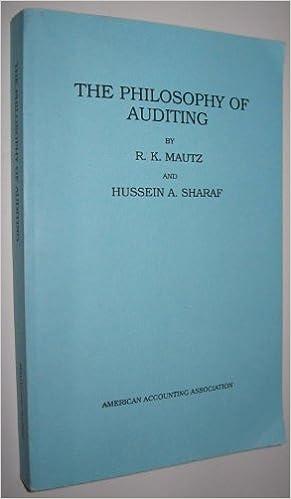Question
Johnny Mobile started a food truck business in 2017 by investing $100,000 of his own money in the corporation in exchange for stock. Mr. Mobile
Johnny Mobile started a food truck business in 2017 by investing $100,000 of his own money in the corporation in exchange for stock. Mr. Mobile concentrates on serving Lobster Rolls and his profits have more than doubled from 2017 2019. Mr. Mobile does not understand why his profits have increased faster than his volume, but he believes that his focus and strategic positioning regarding high levels of customer service and product quality have helped fuel this growth in his business.
Projected sales for 2020 are $396,000 with a cost of goods sold (food costs only Mr. Mobile only uses fresh ingredients) equal to $178,200 with the average lobster roll selling for $11.00.
Currently, Mr. Mobile owns two food trucks. One salaried person staffs each food truck full-time (annual cost per full-time food truck employee is $30,000) and six college students always work 30 hours per week helping out where needed (annual cost per helper employee is $15,000). An outside accountant prepares the taxes and bookkeeping at a cost of $900 per month. The necessary food trucks were originally purchased for cash in 2017. The annual depreciation expense for each food truck is $7,500. Propane and gas have typically run $7,165 annually. Mr. Mobile has noticed that annual expenses for accounting, depreciation, and propane/gas have been rather constant regardless of the sales level.
Required:
1. Please prepare a chart of accounts for Mr. Mobile based on the above information. (Hint: think balance sheet and income statement accounts.
2. Based on the above information, prepare two projected annualized contribution margin income statement for 2020: 1.) one based on total # of units projected, and 2.) one based on selling only 1 unit. Please use formulas and proper formatting for the income statement in Excel. Please show the CMRs, also.
3. What is the break-even point in the number of lobster rolls sold? In sales revenue ($)?
4. Mr. Mobile would like an after-tax net income of $65,000 at a tax rate of 30%. What volume must be reached in number of lobster rolls in order to obtain the desired income?
5. How much can Mr. Mobiles 2020 projected sales decline before his operating income becomes $0?
6. Briefly explain to Mr. Mobile why his profits have increased at a faster rate than his sales please calculate the metric for measuring risk in your explanation.
7. Mr. Mobile wants to know if he should change his lobster roll ingredients and focus on frozen ingredients instead of fresh to reduce his unit (not total) variable costs by 20%; however, his fixed costs would increase by $10,000 annually due to new freezer requirements. Implementing this change will allow him to reduce his average selling price per lobster roll from $11 per unit to $9.75 per unit. Mr. Mobile believes that the lower price will increase the volume (# of units sold not $ revenue) of lobster rolls sold by 10% without incurring any additional fixed costs beyond the $10,000 already listed previously. If this change is made, Mr. Mobile believes that the other projections for 2020 would remain the same.
a. Please prepare an updated what if total contribution margin income statement.
b. Would this change be a good financial move for his business? Please explain.
c. Would it be a good business decision? Please explain and link to strategy.
Step by Step Solution
There are 3 Steps involved in it
Step: 1

Get Instant Access to Expert-Tailored Solutions
See step-by-step solutions with expert insights and AI powered tools for academic success
Step: 2

Step: 3

Ace Your Homework with AI
Get the answers you need in no time with our AI-driven, step-by-step assistance
Get Started


